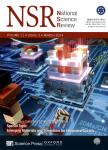Effects of dietary macronutrients and body composition on glucose homeostasis in mice
Effects of dietary macronutrients and body composition on glucose homeostasis in mice作者机构:State Key Laboratory of Molecular Developmental Biology Institute of Genetics and Developmental Biology Chinese Academy of Sciences Institute of Biological and Environmental Sciences University of Aberdeen Key Laboratory of Molecular Pharmacology and Drug Evaluation (Ministry of Education of China) School of Pharmacy Yantai University School of Basic Medical SciencesUniversity of Dali University of Chinese Academy of Sciences CAS Center for Excellence in Animal Evolution and Genetics (CCEAEG)
出 版 物:《National Science Review》 (国家科学评论(英文版))
年 卷 期:2021年第8卷第1期
页 面:19-29页
核心收录:
学科分类:1004[医学-公共卫生与预防医学(可授医学、理学学位)] 100403[医学-营养与食品卫生学] 10[医学]
基 金:supported by the Chinese Academy of Sciences Strategic Programs (XDA12030209 and XDB13030100) the 1000 Talents Program and a Wolfson Merit Award to J.R.S
主 题:dietary macronutrients body fat mass fasting blood glucose glucose tolerance mice
摘 要:As a major health issue, obesity is linked with elevated risk of type 2 diabetes. However, whether disrupted glucose homeostasis is due to altered body composition alone, or whether dietary macronutrients play an additional role, independent of their impact on body composition, remains unclear. We investigated the associations between macronutrients, body composition, blood hormones and glucose homeostasis. We fed C57BL/6N mice 29 different diets with variable macronutrients for 12 weeks. After 10 weeks,intraperitoneal glucose tolerance tests were performed. Generalized linear models were generated to evaluate the impacts of macronutrients, body composition and blood hormones on glucose *** area under the glucose curve (AUC) was strongly associated with body fat mass, but not dietary macronutrients. AUC was significantly associated with fasting insulin levels. Six genes from transcriptomic analysis of epididymal white adipose tissue and subcutaneous white adipose tissue were significantly associated with AUC. These genes may encode secreted proteins that play important previously unanticipated roles in glucose homeostasis.



